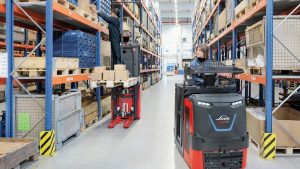Imagine a world where warehouses operate seamlessly, with robots traversing aisles and fulfilling orders with precision. The integration of picking robots marks a significant shift in the landscape of warehouse technology, promising increased efficiency and accuracy. But what does this mean for the future of labor in these spaces? How will human workers adapt to these new technological companions, and what challenges might arise in this evolving ecosystem? As we explore the implications of picking robot on warehouse operations, we uncover a fascinating intersection of innovation and adaptation that paves the way for a new era in supply chain management.
picking robots marks a significant shift in the landscape of warehouse technology, promising increased efficiency and accuracy. But what does this mean for the future of labor in these spaces? How will human workers adapt to these new technological companions, and what challenges might arise in this evolving ecosystem? As we explore the implications of picking robot on warehouse operations, we uncover a fascinating intersection of innovation and adaptation that paves the way for a new era in supply chain management.
The Evolution of Warehouse Technology
Over the years, warehouse technology has undergone a remarkable evolution, transforming the way goods are stored, organized, and shipped efficiently. From basic inventory management systems to advanced automated solutions, the industry has seen a shift towards maximizing space utilization and streamlining operations. Innovations in robotics, AI, and IoT have played a pivotal role in enhancing productivity and accuracy within warehouse environments, revolutionizing the logistics landscape.
Understanding Picking Robots
Amidst the technological advancements in warehouse operations, grasping the functionality and significance of picking robots is essential for optimizing efficiency and accuracy in modern logistics processes. Picking robots are automated machines designed to pick items from fulfillment centers or warehouses. They utilize advanced technologies like artificial intelligence and computer vision to identify, grasp, and move items, streamlining the order fulfillment process and reducing errors in inventory management.
Benefits of Picking Robots
Harnessing the capabilities of picking robots in warehouse operations offers a multitude of benefits that revolutionize order fulfillment processes. Picking robots enhance efficiency by reducing picking errors and increasing accuracy. They optimize warehouse space utilization through compact design and strategic navigation. Additionally, these robots work tirelessly, improving overall productivity and allowing human workers to focus on more complex tasks. Ultimately, integrating picking robots leads to streamlined operations and cost savings.
Future Implications in Warehousing
Looking ahead, the evolution of warehouse technology is poised to usher in a new era of efficiency and innovation with profound implications for the future of warehousing operations. Advancements such as autonomous robots, AI-driven analytics, and IoT integration will optimize inventory management, streamline order fulfillment, and enhance overall productivity. Warehouses will become smarter, more agile, and capable of meeting the increasing demands of modern e-commerce and supply chain dynamics.